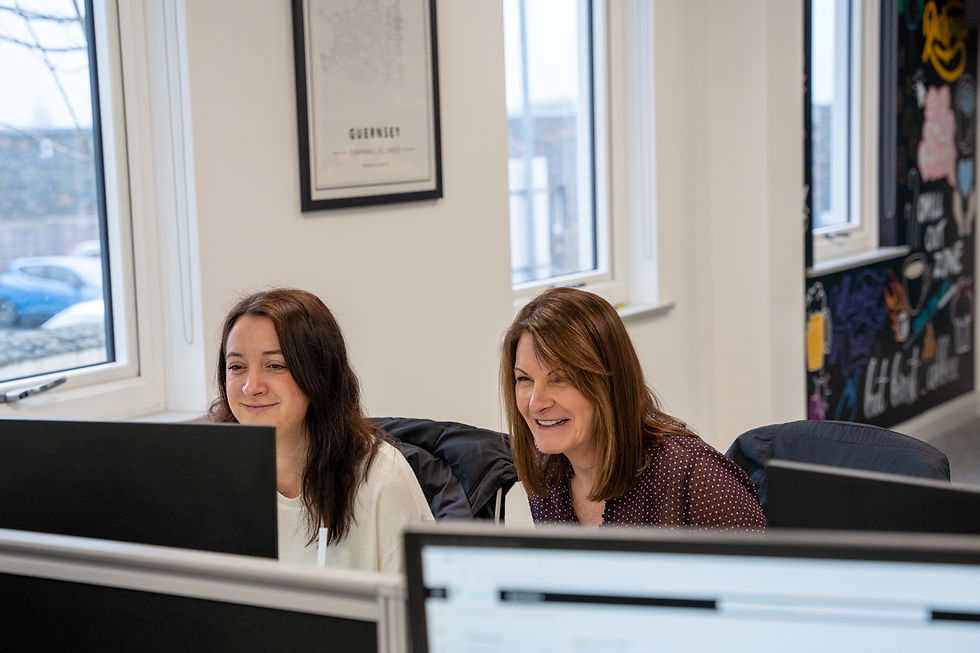From Red Ledgers to Real-Time Insights: The Evolution of the Modern Accountant
- Katie Leach
- Sep 11
- 3 min read
by Craig Shorto, Managing Director
When I began my career in accountancy, one of my earliest assignments was preparing the accounts for the Ladies’ Luncheon Club in Guernsey. Their records were handwritten in a red ledger book - meticulously maintained, but entirely manual. I would sit with a calculator, ticking off entries, balancing columns, and preparing a set of financial statements from ink on paper. Back then, that was accountancy: recording transactions, totting up receipts, and ensuring everything reconciled to the penny.
Fast forward to today, and I now advise medium-sized commercial businesses with global operations and cross-border ambitions. My work encompasses strategic decision-making, operational insight, and digital transformation. The contrast is stark, but it reflects a broader truth: the role of the accountant has fundamentally evolved from technical specialist to strategic leader.
From Back Office to the Boardroom
Traditionally, accountants were seen as the people who told you what had happened after the fact. Reports were often prepared months after the year-end, long after key decisions had already been made. Our value was measured by how accurately we could report historical data, file tax returns on time, and keep companies on the right side of regulators.
But that’s no longer sufficient. The most successful accountants today don’t just report on the past; they help shape the future. We are now expected to contribute directly to strategic discussions, influence business direction, and provide the financial clarity needed to support confident decision-making. In many organisations, accountants now have a seat at the boardroom table, not simply as observers, but as key drivers of business performance.
Technology: A Catalyst for Transformation
Much of this evolution has been enabled by technology. Cloud-based accounting platforms, AI-powered automation, data analytics tools, and integrated business systems have transformed how we work.
Tasks that once took hours, such as bank reconciliations, invoice processing, or expense tracking, are now handled automatically. Artificial intelligence and robotic process automation (RPA) can extract data from receipts, categorise transactions, and even flag anomalies. What once required the full attention of a junior accountant can now be done in seconds with minimal oversight.
Real-Time Data, Strategic Agility
One of the most significant developments in recent years has been the shift to real-time financial information. Businesses no longer accept a six-week wait for management accounts or year-end figures. They want and need immediate access to up-to-date data that supports agile, well-informed decisions.
This immediacy changes everything. With the right tools and expertise, accountants can now play a pivotal role in scenario planning, forecasting, and assessing strategic options in real time. We’re no longer just supporting strategy, we’re helping to drive it.
Adding Value Beyond the Numbers
The modern accountant must be fluent in business, not just finance. We’re expected to understand strategy, operations, systems, and risk. Our remit now extends across mergers and acquisitions, digital transformation, international growth, sustainability initiatives, and organisational change.
Increasingly, our value lies not in how well we report the past, but in how effectively we help shape what comes next. That means being commercially astute, forward-thinking, and ready to challenge assumptions.
AI and the Augmented Accountant
Artificial intelligence may be the buzzword of the decade, but it’s already having a tangible impact on the profession. AI isn’t here to replace accountants; it’s here to enhance our capabilities.
By automating repetitive tasks, AI enables us to focus on higher-value activities: analysis, interpretation, and providing strategic guidance. It frees up our time for the work that truly makes a difference.




This was a solid article, full of value. For businesses moving online, Companies999 is one of the best Birmingham online accountants.